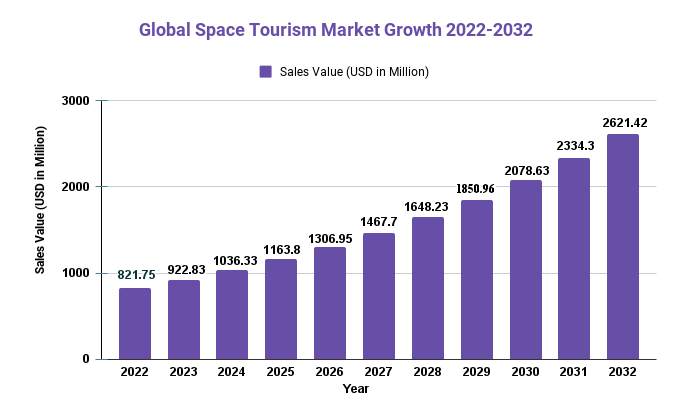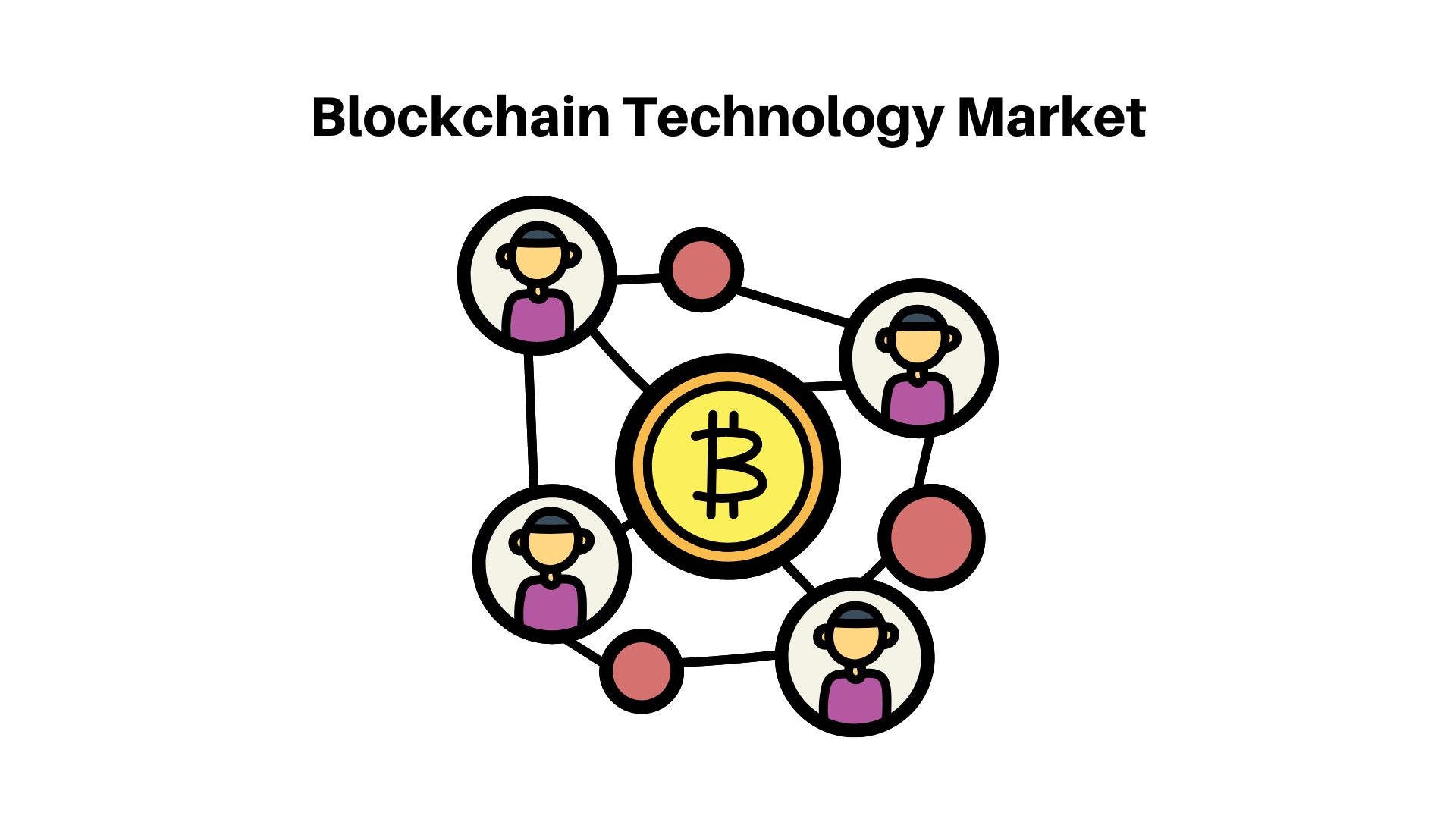Space Tourism Market Vendors Analysis [Airbus SE., The Boeing Company] | CAGR [12.3%] By 2032
![Space Tourism Market Vendors Analysis [Airbus SE., The Boeing Company] | CAGR [12.3%] By 2032](https://www.enterpriseappstoday.com/wp-content/uploads/2023/03/Space-Tourism-Market.gif)
Page Contents
Market Overview
Published Via 11Press: Space tourism is on the rise and will only keep expanding in the future. Space tourism involves offering individuals commercial space flight services for an immersive experience in spaceflight and zero gravity.
Market.us estimates the space tourism market to be worth USD 821.75 millions in 2022 and forecasts it will reach a value of USD 2621.42 million by 2032; this value will increase at an annual compound growth rate (CAGR) of 12.3% between 2022-2032.
Space travel has experienced remarkable growth due to a number of factors, such as an increasing interest in the subject, technological advances in reusable spacecraft design, and private players entering this industry.
North America is currently the leading market for space tourism, followed by Europe and Asia-Pacific. With several private companies operating there, America is an important player in this sector due to government initiatives like NASA's Commercial Crew Program.
Space tourism is still in its early stages and must overcome numerous challenges to realize its full potential. Costs, safety concerns and regulatory obstacles must all be overcome in order for space tourism to grow exponentially as technology improves and costs decrease.
Request For Sample Report Here: https://market.us/report/space-tourism-market/request-sample

Regional Snapshot
- Thanks to numerous private companies and government initiatives, North America is the largest market for space tourism. With companies such as SpaceX, Blue Origin and Virgin Galactic establishing programs there, the United States is a major player in this space tourism market.
- Europe is a major market for space tourism with many companies investing in the development and implementation of programs. The European Space Agency (ESA), is also taking various initiatives to support this growing industry.
- In the next few years, the Asia-Pacific region will see a tremendous increase in space tourism. This region is home to many new space programs, and countries like Japan and China are investing heavily in space tourism.
- The space tourism market is expected to grow significantly in Africa and the Middle East over the next few years. Already, many regions like the United Arab Emirates have made significant investments in space tourism initiatives and are currently developing the infrastructure.
Drivers
- Space Tourism Boom: There is an increasing interest among people to experience space travel, which has spurred commercial space tourism. Many see space tourism as the ultimate adventure and are willing to pay a premium for the opportunity.
- Development of Reusable Spacecraft: Private companies such as SpaceX, Blue Origin, and Virgin Galactic have been actively working on developing reusable spacecraft to lower the cost of space travel for everyone. Furthermore, these firms aim to make spacecraft more comfortable for passengers so that they have a better experience while in orbit.
- Entree of private players into the space industry: The entry of private companies has created intense competition and innovation in this market. Companies are investing heavily to develop space tourism programs, propelling their growth.
- International space tourism initiative: There are many government initiatives that support the growth of this market. NASA's Commercial Crew Program aims at developing commercial spaceflight capabilities to transport astronauts as well as other passengers to the International Space Station.
- Technology advancements: It is possible to develop innovative space tourism programs thanks to technological advances. Virtual reality and augmented reality are two examples of ways to offer space tourists a more immersive experience.
Restraints
- High Costs: Space tourism remains an expensive industry, and the high costs associated with space travel remain a major obstacle to market expansion. The price tag associated with developing and launching spacecraft is high, which is then passed on to customers, making it difficult for many people to afford the venture.
- Safety Concerns: Space travel is inherently risky, and safety worries have become a major hindrance to the market. There have been several high-profile accidents in the space industry which has sparked increased scrutiny and regulation.
- Regulatory Challenges: The space tourism market is highly regulated, and regulatory obstacles can be a significant stumbling block. Governments around the world have different standards and regulations regarding space travel, which could present obstacles for companies looking to break into this lucrative sector.
- Limited Infrastructure: The infrastructure necessary for space travel remains limited, which can pose a major obstacle on the market. There are only so many launch sites around the world, limiting how many flights can be conducted.
- Environmental Concerns: The space tourism industry can have a major effect on the environment, which is becoming an increasing worry for many. Emissions from rockets and other spacecraft contribute to climate change, making this issue an impediment to growth in this market.
Opportunities
- Growth in Space Tourist Numbers: As this market matures and becomes more accessible, the number of space tourists are expected to soar dramatically. Companies operating within the space tourism space have an excellent opportunity to expand operations, develop new products/services, and stay ahead of competitors.
- Development of New Space Tourism Products: The space tourism market is still developing, providing companies with an opportunity to innovate and offer customers unique experiences. With this in mind, companies have the chance to remain competitive in today's highly competitive environment.
- Expansion of Space Tourism Market into New Regions: At present, most space tourism operations are concentrated in a few regions; however, there is significant potential for expansion into additional locations. Companies thus have an opportunity to reach new customers and diversify their clientele base.
- Development of Space Infrastructure: The expansion of space infrastructure, such as launch sites and spaceports, presents companies with an opportunity to expand their operations and create new products and services.
- Collaboration With Other Industries: The space tourism market provides an ideal platform for collaboration among other sectors like hospitality, travel, and entertainment. Companies can take advantage of this insight to craft innovative experiences for customers.
View Detailed TOC of the Report | https://market.us/report/space-tourism-market/table-of-content/
Challenges
- Technical challenges: Space travel is a complex industry that requires complex technology. For these reasons, the market's companies must invest heavily in research and development.
- High costs. As we have already mentioned, space tourism presents a major challenge due to its high costs. Customers have to pay high costs for spacecraft development and launch. High costs can make it hard for companies to turn a profit and limit the number of customers.
- Safety concerns To ensure their customers' safety, companies should invest heavily in safety measures and follow strict regulations.
- Environmental Concerns: Space travel's effects on the environment are becoming a growing concern for many, and companies must take steps to minimize their effect. This can be challenging since emissions from rockets and other spacecraft contribute to climate change.
- Limited Market Size: Although the space tourism market offers considerable potential, its size remains limited. This could make it challenging for companies to achieve economies of scale and generate profits.
Market Segmentation
Type
- Suborbital
- Orbital
By End-User
- Common People
- Upper Rich People
By Key Players
- Airbus SE.
- The Boeing Company
- Space Exploration Technologies Corp.
- Virgin Galactic
- Blue Origin
- Bigelow Aerospace
- Space Adventures
- Zero 2 Infinity
- Orion Span
- Exos Aerospace Systems & Technologies
- Space Island Group (SIG)
- among others
Report Scope
| Report Attribute | Details |
| The market size value in 2022 | USD 821.75 Mn |
| Revenue forecast by 2032 | USD 2621.42 Mn |
| Growth Rate | CAGR Of 12.3% |
| Regions Covered | North America, Europe, Asia Pacific, Latin America, and Middle East & Africa, and Rest of the World |
| Historical Years | 2017-2022 |
| Base Year | 2022 |
| Estimated Year | 2023 |
| Short-Term Projection Year | 2028 |
| Long-Term Projected Year | 2032 |
Frequently Asked Question
Q: What is the current market size for the space tourism market?
A: According to a report by Market.us, the space tourism market was valued at USD 821.75 million in 2022 and is expected to reach USD 2621.42 million by 2032, growing at a CAGR of 12.3% during the forecast period.
Q: What are the key segments of the space tourism market?
A: The space tourism market can be segmented based on type (Suborbital, Orbital), by end-user (Common People, Upper Rich People), and geography (North America, Europe, Asia-Pacific, Latin America, and Middle East & Africa).
Q: Who are the key players in the space tourism market?
A: Some of the key players in the space tourism market include Airbus SE., The Boeing Company, Space Exploration Technologies Corp., Virgin Galactic, Blue Origin, Bigelow Aerospace, Space Adventures, Zero 2 Infinity, Orion Span, Exos Aerospace Systems & Technologies, and Space Island Group (SIG), among others.
The team behind market.us, marketresearch.biz, market.biz and more. Our purpose is to keep our customers ahead of the game with regard to the markets. They may fluctuate up or down, but we will help you to stay ahead of the curve in these market fluctuations. Our consistent growth and ability to deliver in-depth analyses and market insight has engaged genuine market players. They have faith in us to offer the data and information they require to make balanced and decisive marketing decisions.



